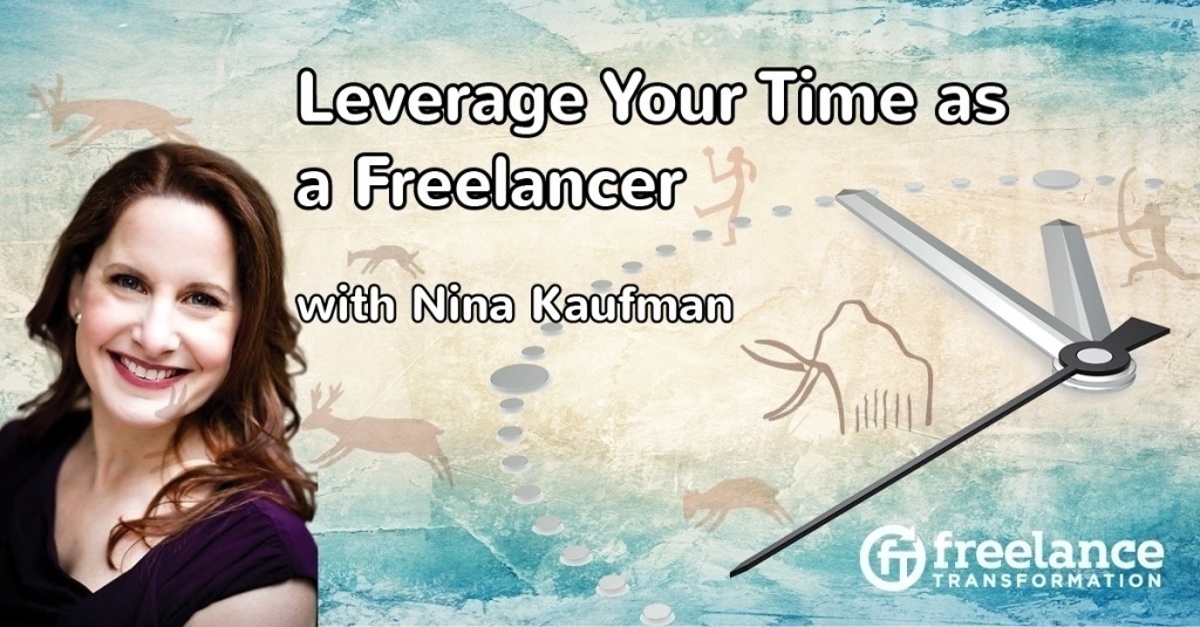
FT 087: Leverage Your Time as a Freelancer with Nina Kaufman
If the primary product that you sell is your labour, then how can you leverage your time so that the money you earn isn’t directly tied to the number of hours that you work?
Nina Kaufman is the founder of Business Exponential, where she helps service-based entrepreneurs build companies that don’t rely completely on them. Nina shares the story of the hard truths she discovered when she tried to sell her law firm, and several ways that you can leverage your time, from simply freeing up more time while charging the same, all the way up to building a business that you could even sell.
Listen now:
Listen on iTunes Listen on Stitcher
Podcast RSS Feed | Download MP3
Nina shares with us:
As a business attorney and strategist, Nina has a unique perspective to help businesses grow sustainably and ultimately sell.
After working at her law firm for 12 years, Nina found herself waking up in the middle of the night and screaming silently into the mirror because she was having a lot of problems with her business partner. She wanted out.
So she went to a business specialist with all her financial statements, graphs, and list of customers and got this:

“You see this here donut? What you got is the hole. The business is all about you, there is nothing you can sell.”
So, she closed up shop and left with a valuable lesson: You can't get all the time back that you invested into a business if you want out.
What makes for a sellable business?
What if you want to work less because you started a family, or choose a lifestyle so you can travel for 3-4 months, or even retire? You can't do it if you are trading time for dollars. It's like musical chairs and the music stops, but you don't get a chair.
You can leverage your time through a continuity or maintenance model. For example, in IT services, providers and maintain the network through monthly tests and checkins with the client to make sure the service is being used optimally. Maintenance helps prevent major problems from developing for the client and gives the client a sense of security. It makes you the hero!
This model also gets you off the feast-famine cycle and gives you a regular income stream. Now you can plan your finances and your future! You finally don't need to survive from project to project! Or,in Nina's analogy, you don't have to be a caveman hunting mammoths only to feast on one successful hunt then starve until you get the next one.
This model gives you breathing room and takes away so much of the anxiety associated with freelancing. Not only when your current project ends, but also when the economy changes which is out of your hands. Then you can leverage the breathing room to get new prospects more strategic.
Later, you can automate and delegate to make it more efficient and even less dependent on you directly. This is a great time to hire a team, after you have developed a continuity model.
Another way to separate your time from the dollars is to offer education and training, especially videos or ebooks or something that doesn't require you to be there physically or on the phone. Now you have a product that can be sold separately from your services and your time.
To sell a business, the buyers are looking for EBITDA: Earnings Before Interest, Taxes, Depreciation, Amortization. This lets buyers figure out what your profit is rather than the revenue.
It comes down to how much of the business that can function without the owner being there on a daily business. You need to write down your processes and have people in place that can do the services without you. Physical or digital products or you intellectual property that can be sold with out you is valuable on its own, as a part of or separate from the business.
Who are the buyers?
It can be a client or an employee who can take over your work. Often, one of the best buyers are strategic buyers. Strategic buyers work in a complimentary service and want to acquire your business to give their clients more services.
For example, a marketing strategy consultancy bought a graphic design firm because they needed to have more resources in-house. By buying the graphic design firm, they could provide a bigger ticket item, and access to two client bases (their own and the graphic design's customers). This way, the consultancy doesn't have to build their own graphic design department from scratch and go through all the trouble to hire the right people and build a smooth running machine.
Time to delegate. But how do you hire a team?
Try Nina's IDEAL hiring practice.
First of all, the best time is to hire someone is before you really need them. The worst time to hire is when you are swamped and panicked.
Identify the kinds of tasks that the business needs, but you're not good at. You aren't the only one who can do everything. Nina's suggestion is to time track your tasks for a couple weeks so you can actually see how much you spend on tasks and how important it is to your business.
Determine what type of skill sets the person needs to do the work. What level of experience do they need.
Evaluate whether you need someone onsite, full-time, part-time, or some other flexible arrangement. “If I hire someone, they need to be in my physical space and be there all the time.” Not true!
Ask questions to qualify the potential employee to see if they are a good fit. You might even want to give them a test and ask them about the projects they have worked on and how they contributed to that project.
Look at the metrics you want to accomplish. How does hiring someone free up your time or offer specific services to your clients?
Automation instead of hiring:
First step is to figure out steps to processes that are repeated so you can automate it.
For example, appointment setting and scheduling often suck up your time, but it can be steam lined through automation. Nina uses Schedule One. Matt uses Calendly. Both fantastic apps that lets them set aside times specifically for meetings that clients can book off while keeping the work time open for project work.
You can also automate on-boarding clients, such as getting contracts signed and deposits set up. Nina uses MyCase.com to manage her legal clients.
Project management is another big area where automation is extremely useful. Try Trello or Asana. These apps keep the client up to date and free of worry. Communication is central to project management and good client relationships, but if you get lost in the work and forget to keep the client up to date, it doesn't matter how good your work is. You have sabotaged your client relationship.
Want to learn more about how to set up a business to run without you and leverage your time, check out Nina's website, Business Exponential.
Resources Mentioned:
- Why I Love Consulting by Matt Inglot
- Schedule Once
- Calendly
- MyCase.com
- Trello
- Asana
Find Nina online:
Share your thoughts and feedback below: